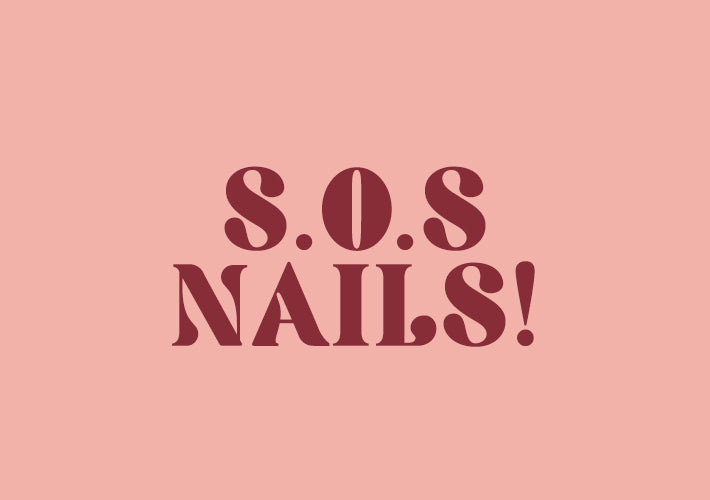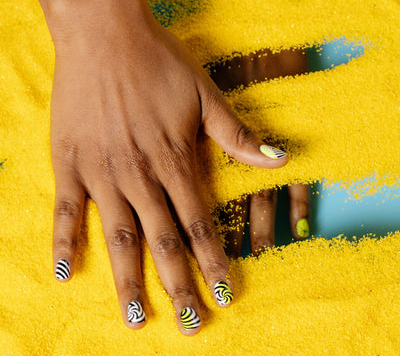
S.O.S NAILS!
Maria MGUnderstanding Onycholysis and Protecting Your Manicure
Gel polish has revolutionized the world of manicures, offering long-lasting, chip-free wear. However, once it's time to remove that glossy gel layer, you may encounter some post-removal issues. Don't fret! In this educational and fun blog article, we'll explore common problems that may arise after gel polish removal and provide you with practical tips to overcome them. So, let's dive in and learn how to bounce back with healthy, beautiful nails!
GEL POLISH REMOVAL ISSUES
Improper removal of gel polish can contribute to onycholysis. Onycholysis is a medical term used to describe a condition where the nail plate separates or lifts away from the underlying nail bed. It is characterized by a visible gap between the nail and the nail bed, usually starting at the free edge and progressing towards the cuticle. Onycholysis can affect one or more nails and may be partial or complete.
The process of removing gel polish typically involves soaking the nails in acetone or using other gel polish removal techniques. If the gel polish is forcibly peeled or scraped off, it can cause damage to the nails and lead to onycholysis.
WHAT ARE OTHER CAUSES THAT DEVELOP ONYCHOLYSIS?
-
Injury
-
Trauma - the most common cause, daily tapping of long fingernails on a keyboard.
-
Can be caused by manicure tools that are pushed beneath the nail to clear dirt or smooth the nail.
-
Certain skin conditions, including allergic reactions, allergy to products used on the nail, like chemical nail polish remover or artificial nail tips.
-
After exposure to some medicines (notably medicines from the psoralen, tetracycline or fluoroquinolone groups) the nail can react to sun exposure by lifting away from its bed.
-
Disease - thyroid disease or not getting enough of essential vitamins or minerals, such as iron.
PREVENTION & TREATMENT
Practice Gentle Nail Care
Avoid aggressive filing, buffing, or picking at your nails, as these can cause trauma and damage the nail bed. Instead, use a fine-grit nail file to shape your nails in one direction, and always handle them with care.
Protect Your Nails
When engaging in activities that could put stress on your nails, such as gardening or household chores, it's important to protect them. Wear gloves to shield your nails from excessive moisture, chemicals, or potential trauma.
Proper Gel Polish Removal
It's crucial to remove the gel polish correctly to minimize the risk of onycholysis. Follow the recommended removal process, which typically involves soaking the nails in acetone or using a gel polish removal kit. Avoid peeling or scraping off the gel polish forcefully, as this can damage the nail bed and increase the likelihood of onycholysis.
Hydrate and Nourish
Keep your nails and cuticles well-hydrated to maintain their strength and flexibility. Regularly apply cuticle oil or a moisturizing cream to your nails and cuticles. This helps prevent dryness, additionally, incorporate a balanced diet rich in vitamins and minerals to promote overall nail health.
Medications and Topical Treatments: Depending on the underlying cause and severity of your onycholysis, your healthcare professional may prescribe medications or recommend topical treatments.
Patience and Time: Recovering from onycholysis takes time, and patience is key. Nails grow slowly, so it may take several months for a new, healthy nail to replace the affected one. Be consistent with your treatment regimen and follow up with your healthcare professional as advised to track progress and make any necessary adjustments.
To minimize the risk of onycholysis during gel polish removal, it's recommended to follow proper removal procedures. This involves using a gentle technique and allowing the acetone or gel polish remover to break down the polish before gently pushing or sliding it off the nail surface. It's advisable to consult a professional nail technician or refer to specific gel polish removal instructions for the best practices.




